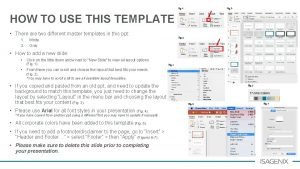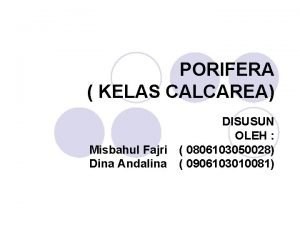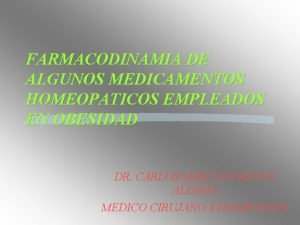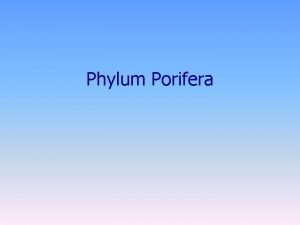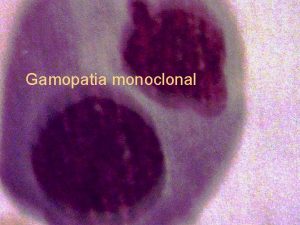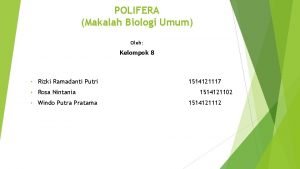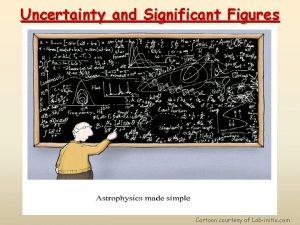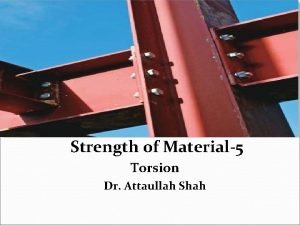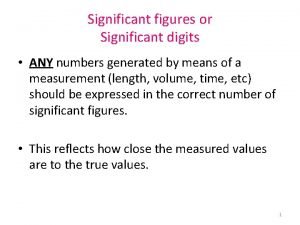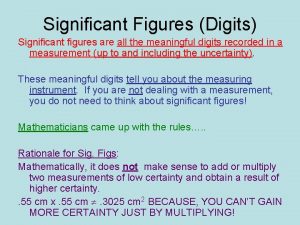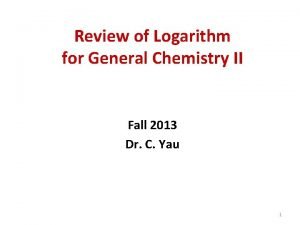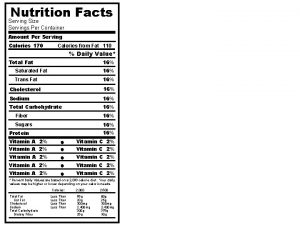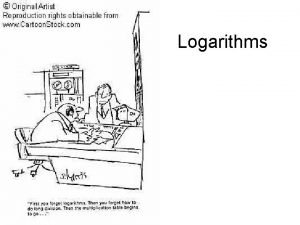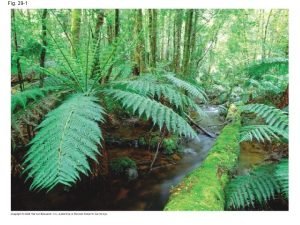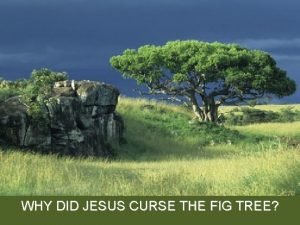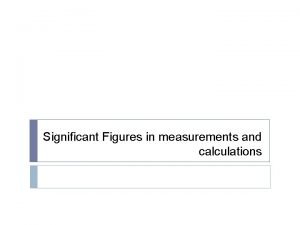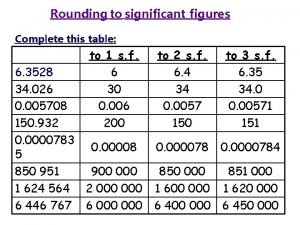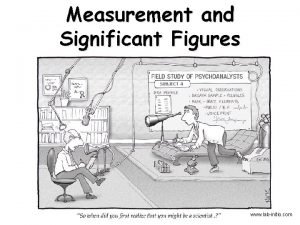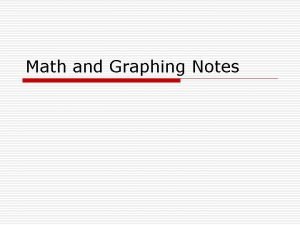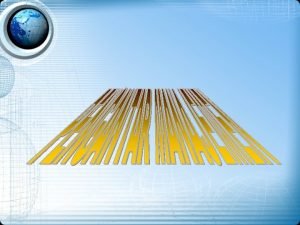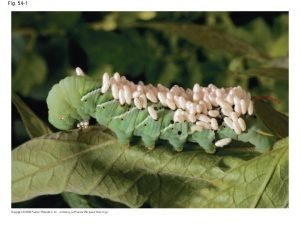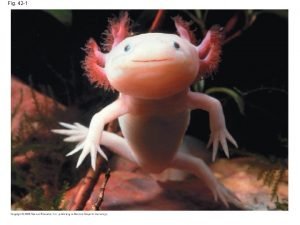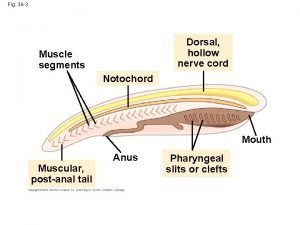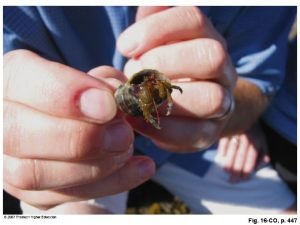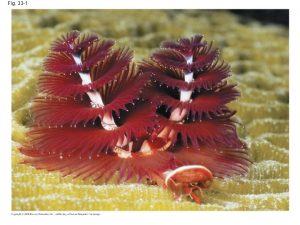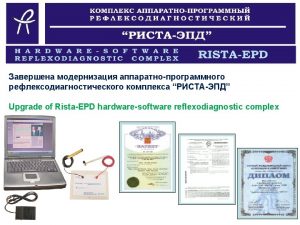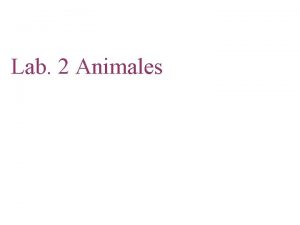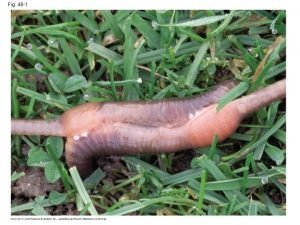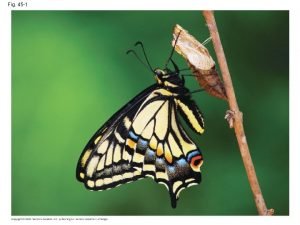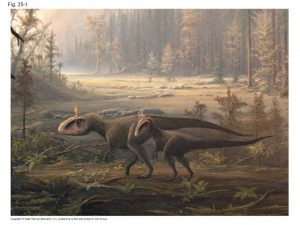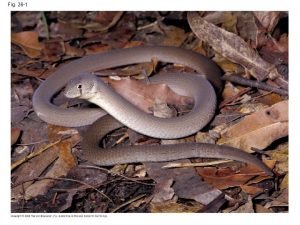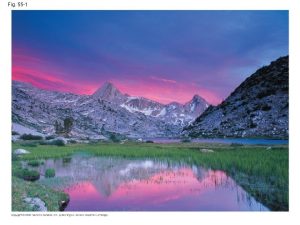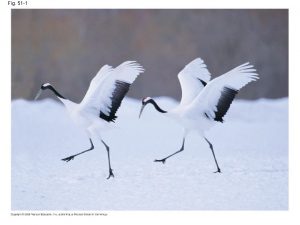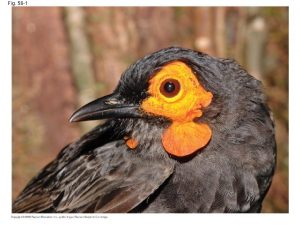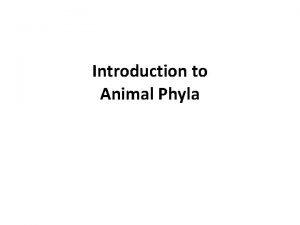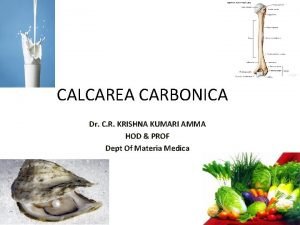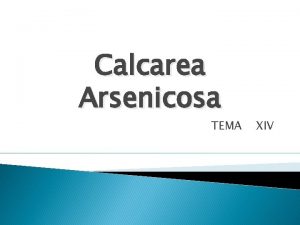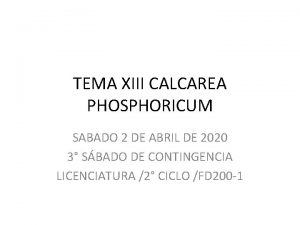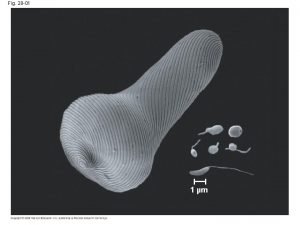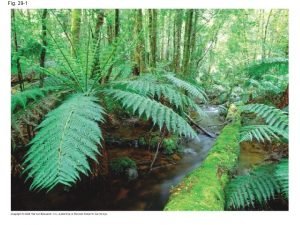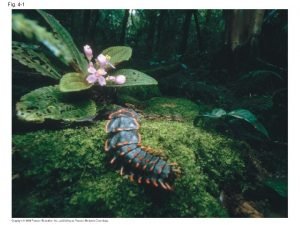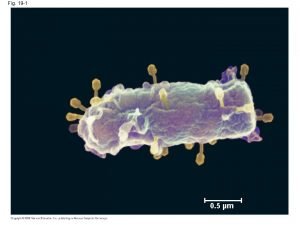Fig 33 1 Fig 33 2 Calcarea and




































- Slides: 36

Fig. 33 -1

Fig. 33 -2 Calcarea and Silicea ANCESTRAL PROTIST Eumetazoa Common ancestor of all animals Cnidaria Lophotrochozoa Bilateria Ecdysozoa Deuterostomia

Fig. 33 -3 -1 Placozoa (1 species) Calcarea and Silicea (5, 500 species) 0. 5 mm A sponge Cnidaria (10, 000 species) A placozoan (LM) Ctenophora (100 species) A jelly Acoela (400 species) A ctenophore, or comb jelly 1. 5 mm Acoel flatworms (LM) LOPHOTROCHOZOANS Platyhelminthes (20, 000 species) Rotifera (1, 800 species) A marine flatworm A rotifer (LM) Ectoprocta (4, 500 species) Ectoprocts Brachiopoda (335 species) A brachiopod

Fig. 33 -3 -2 Cycliophora (1 species) Acanthocephala (1, 100 species) 100 µm An acanthocephalan (LM) A cycliophoran (colorized SEM) Nemertea (900 species) Mollusca (93, 000 species) An octopus Annelida (16, 500 species) A ribbon worm A marine annelid ECDYSOZOA Loricifera (10 species) Priapula (16 species) 50 µm A loriciferan (LM) A priapulan

Fig. 33 -3 -3 Tardigrada (800 species) Onychophora (110 species) 100 µm Tardigrades (colorized SEM) An onychophoran Nematoda (25, 000 species) Arthropoda (1, 000 species) A roundworm A scorpion (an arachnid) DEUTEROSTOMIA Hemichordata (85 species) An acorn worm Echinodermata (7, 000 species) A sea urchin Chordata (52, 000 species) A tunicate

Fig. 33 -4 Choanocyte Osculum Flagellum Collar Food particles in mucus Choanocyte Azure vase sponge (Callyspongia plicifera) Spongocoel Phagocytosis of food particles Pore Epidermis Spicules Water flow Amoebocytes Mesohyl Amoebocyte

Fig. 33 -5 Polyp Mouth/anus Tentacle Medusa Gastrovascular cavity Gastrodermis Body stalk Mesoglea Epidermis Tentacle Mouth/anus

Fig. 33 -6 Tentacle Cuticle of prey Thread Nematocyst “Trigger” Thread discharges Cnidocyte Thread (coiled)

Fig. 33 -7 (b) Jellies (class Scyphozoa) (a) Colonial polyps (class Hydrozoa) (c) Sea wasp (class Cubozoa) (d) Sea anemone (class Anthozoa)

Table 33 -1

Fig. 33 -9

Fig. 33 -10 Pharynx Gastrovascular cavity Mouth Eyespots Ganglia Ventral nerve cords

Table 33 -2

Fig. 33 -11 Male Female Human host 1 mm Motile larva Ciliated larva Snail host

Fig. 33 -12 200 µm Proglottids with reproductive structures Hooks Sucker Scolex

Fig. 33 -22 Epidermis Cuticle Coelom Circular muscle Septum (partition between segments) Metanephridium Longitudinal muscle Anus Dorsal vessel Chaetae Intestine Fused nerve cords Ventral vessel Nephrostome Metanephridium Clitellum Esophagus Pharynx Giant Australian earthworm Cerebral ganglia Crop Intestine Gizzard Mouth Subpharyngeal ganglion Blood vessels Ventral nerve cord with segmental ganglia

Fig. 33 -23 Parapodia

Fig. 33 -24

Fig. 33 -15 Nephridium Visceral mass Coelom Heart Intestine Gonads Mantle Stomach Shell Radula Mantle cavity Mouth Anus Gill Foot Nerve cords Esophagus Mouth Radula

Table 33 -3

Fig. 33 -16

Fig. 33 -17 (a) A land snail (b) A sea slug

Fig. 33 -18 Mantle cavity Anus Mouth Stomach Intestine

Fig. 33 -19

Fig. 33 -20 Mantle Hinge area Coelom Gut Heart Adductor muscle Digestive gland Anus Mouth Excurrent siphon Shell Palp Foot Mantle cavity Gonad Gill Water flow Incurrent siphon

Fig. 33 -21 Octopus Squid Chambered nautilus

Fig. 33 -29 Cephalothorax Antennae (sensory reception) Head Abdomen Thorax Swimming appendages (one pair located under each abdominal segment) Walking legs Pincer (defense) Mouthparts (feeding)

Table 33 -5

Fig. 33 -27

Fig. 33 -30

Fig. 33 -31 Scorpion 50 µm Dust mite Web-building spider

Fig. 33 -35 Abdomen Thorax Head Compound eye Antennae Heart Cerebral ganglion Dorsal artery Crop Anus Vagina Malpighian tubules Ovary Tracheal tubes Mouthparts Nerve cords

Fig. 33 -37

Fig. 33 -38 (a) Ghost crab (b) Krill (c) Barnacles

Fig. 33 -39 Anus Stomach Spine Gills Central disk Digestive glands Madreporite Radial nerve Ring canal Gonads Ampulla Podium Radial canal Tube feet

Fig. 33 -40 (a) A sea star (class Asteroidea) (b) A brittle star (class Ophiuroidea) (c) A sea urchin (class Echinoidea) (d) A feather star (class Crinoidea) (e) A sea cucumber (class Holothuroidea) (f) A sea daisy (class Concentricycloidea)
 Fig. 2
Fig. 2 Kelas calcarea
Kelas calcarea Phs rameno
Phs rameno Tendinitis calcarea homöopathie
Tendinitis calcarea homöopathie Calcarea carbonica obesidad
Calcarea carbonica obesidad Porifera characteristics
Porifera characteristics Calcarea phosforica
Calcarea phosforica Manfaat calcarea
Manfaat calcarea Parable of the barren fig tree
Parable of the barren fig tree My father and the fig tree analysis
My father and the fig tree analysis Significant figures
Significant figures The composite bar is firmly attached to unyielding supports
The composite bar is firmly attached to unyielding supports Rules for significant figures
Rules for significant figures Sig fig rules
Sig fig rules Are trailing zeros significant
Are trailing zeros significant 654 to 1 significant figure
654 to 1 significant figure Significant figures for ph
Significant figures for ph Sig fig rules
Sig fig rules Logs in chemistry
Logs in chemistry Redox equation
Redox equation Stacy's pita chips nutrition label
Stacy's pita chips nutrition label How to get rid of ln
How to get rid of ln Fig 29
Fig 29 Why did jesus curse the fig tree
Why did jesus curse the fig tree Parable of the barren fig tree
Parable of the barren fig tree Symbols in the bell jar
Symbols in the bell jar Sig fig rules for multiplication
Sig fig rules for multiplication When is 0 a significant figure
When is 0 a significant figure What is 2 significant figures
What is 2 significant figures Sig fig
Sig fig Sig fig checker
Sig fig checker Fig organisasi
Fig organisasi Fig 54
Fig 54 Fig 52
Fig 52 Bioflix activity: gas exchange -- inhaling and exhaling
Bioflix activity: gas exchange -- inhaling and exhaling Fig hollow barn
Fig hollow barn Fig 16
Fig 16
